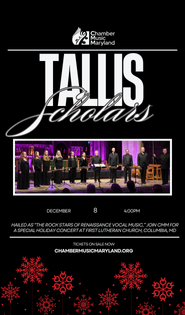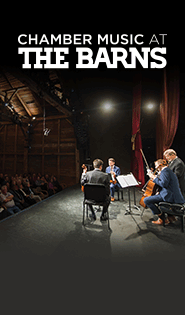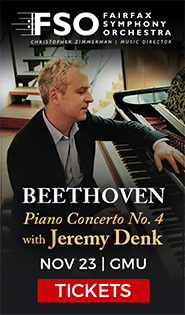The Thirteen courts fresh controversy in political staging of Bach’s “St. John Passion”

Despite its rich musical rewards, Bach’s St. John Passion is a controversial work, because of the work’s characterization of Jews as an angry bloodthirsty mob at the trial of Jesus. The Thirteen, the chamber choir directed by Matthew Robertson and based in the District of Columbia, added yet another layer of contention in its performance of the work, live-streamed from St. Mark’s Episcopal Church on Capitol Hill Saturday night.
Director Timothy Nelson staged the lengthy piece with an African-American singer, Jonathan Woody, portraying Jesus. Clad in a purple hooded sweatshirt, Woody was arrested, beaten, and killed by the other singers in gestures that seemed designed to recall deaths of black men at the hands of American police officers.
(In a related and disturbing development, church officials reported the discovery of a noose placed high in a tree in the church’s courtyard on Friday. The Metropolitan Police Department is investigating the incident as a possible hate crime, but there is currently no evidence explicitly linking the incident to the rehearsals and performance of the Bach Passion inside the church this weekend. The church has also had two Black Lives Matters banners stolen from its walls this year.)
Bach composed thrilling if potentially offensive choral miniatures for the angry chants of the Jewish crowd. The text comes directly from the Gospel of John, of the four Gospel texts the one that identifies the crowd specifically as Jews. Robertson and his singers altered the text, changing the German word for Jews to more general words like people or citizens.
(Many churches and groups now make such changes to the St. John Passion, and it seemed even more important given that the performance was taking place on the first night of Passover.)
Underneath the controversy was a mostly elegant musical performance, which Robertson molded with incisive tempos and dramatic pacing. The sound, as is often the case with live-streaming, was not optimal, revealing oddities of tone in some individual singers and posing balance problems between the orchestra, which was spaced apart to observe social distancing, and the singers in the stage space at the north end of the church’s nave.
The balance of the ensemble was most optimal during the chorales— moments of peaceful reflection that dot this often turbulent score. As if to accentuate the feeling of calm evoked by separating the listener from the narrative, the singers turned to face the opposite direction, looking upward to another camera. It was the sort of choice that would not be possible in a live performance but that took advantage of the circumstances imposed by the coronavirus pandemic.
Tenor Matthew Hill was in excellent voice as the Evangelist, covering the wide range from a low growl to clarion high notes placed with unfailing precision. Jonathan Woody was steadfast and sympathetic as Jesus, revealing the strengths of his voice most in the aria “Mein teurer Heiland,” slightly muffled by the mask, worn by almost all the musicians. The other eight singers joined in the work’s numerous choruses, and each also took one of the solo arias, all sung from memory because of the staging.
Clifton Massey deployed his lovely countertenor voice to “Von den Stricken,” combining a pliant legato tone and sure intonation. Tenor Gene Stenger nailed the long held notes of “Erwäge, wie sein blutgefärbter Rücken,” although the gesture of running his hand over the scourged back of Jesus, with Woody collapsed over a chair, was repeated so often that it became ridiculous.
Mezzo-soprano Emily Marvosh sang “Es ist vollbracht” with a rueful tone, shifting gears on a dime into the impeccable runs of the B section, accompanied by Elena Smith on the viola da gamba solo, placed onstage to poignant effect. The handheld camera angles and often awkward stage direction from Nelson complicated many of these solos, as with Molly Netter’s “Zerfließe, mein Herze.” The talented soprano still managed to float her limpid high notes beautifully, accompanied by chirping flute and oboe, while on all fours or lying on the floor.
Nelson’s staging was minimal, involving no set pieces and just a few chairs rearranged by the singers scene by scene. The chorus, sometimes even while singing the complicated crowd pieces, abused Woody’s Jesus in every conceivable way: kicking, slapping, and spitting, and bending his arms behind his back, on the floor or as he was perp-walked around. The singers even took turns taking a position that evoked but did not quite recreate the placement of a police officer’s knee on a suspect’s neck.
One goal of the chanted Passion reading, expanded by Bach in his Passion settings, was to make the listener feel his own guilt as a sinner in the death of Jesus. Nelson perhaps sought to transfer that pathos to the black people killed by police and to ask the viewer to contemplate how audience members might be complicit in those crimes. In this light, the violent shouts of those complicated, contentious Jewish choruses took on a completely different feeling.
This performance can be streamed through April 11. thethirteenchoir.org





